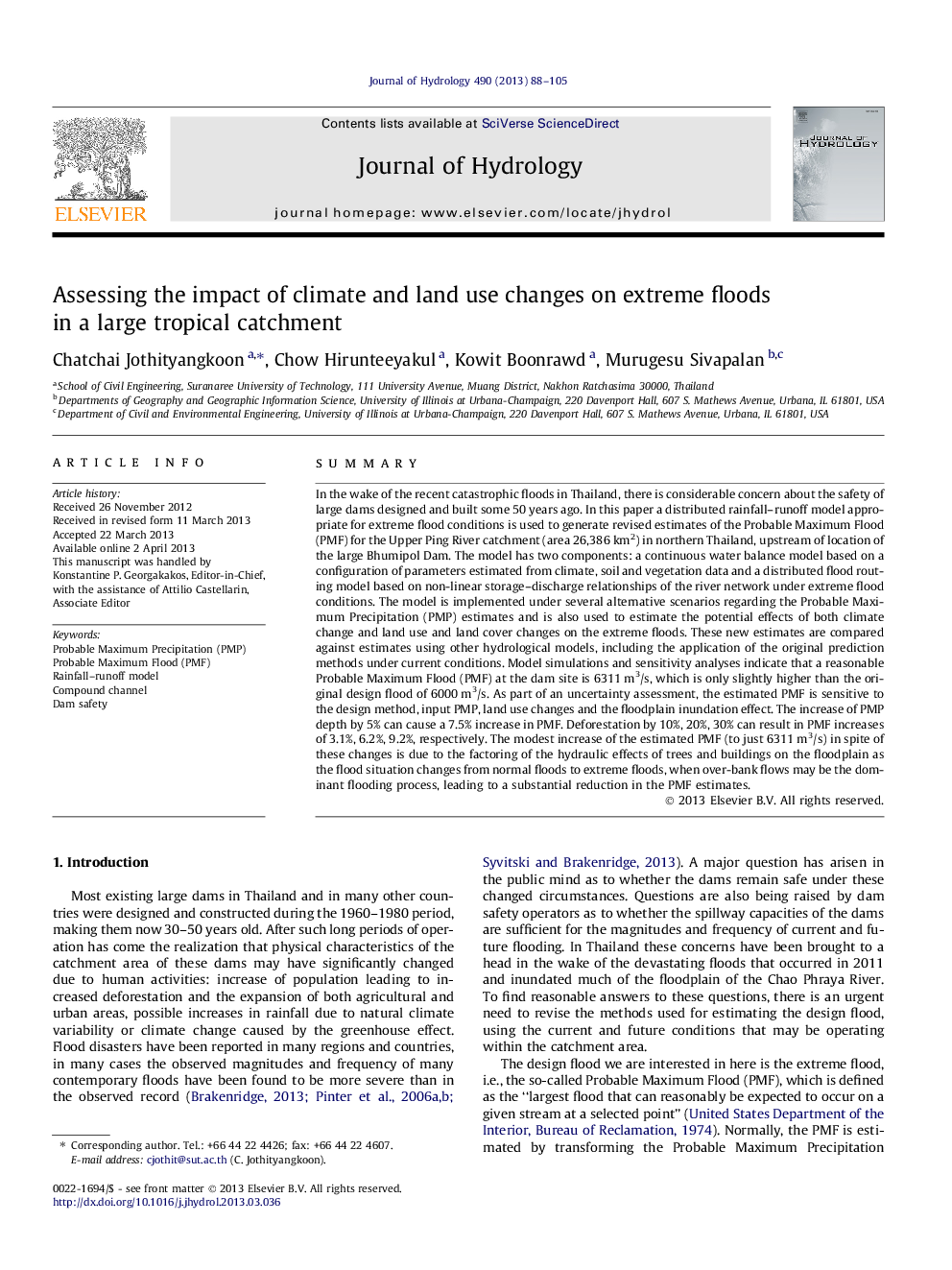| Article ID | Journal | Published Year | Pages | File Type |
|---|---|---|---|---|
| 4576291 | Journal of Hydrology | 2013 | 18 Pages |
•We develop a distributed rainfall–runoff model for extreme flood estimation.•PMF at the dam is 6311 m3/s, higher than design max. flood (6000 m3/s), in 1955.•PMF is sensitive to PMP, deforestation, wetness, floodplain inundation effect.•The increase of PMP depth by 5% can cause a 7.5% increase in PMF.•Deforestation by 10%, 20%, 30% can result in PMF increases of 3.1%, 6.2%, 9.2%.
SummaryIn the wake of the recent catastrophic floods in Thailand, there is considerable concern about the safety of large dams designed and built some 50 years ago. In this paper a distributed rainfall–runoff model appropriate for extreme flood conditions is used to generate revised estimates of the Probable Maximum Flood (PMF) for the Upper Ping River catchment (area 26,386 km2) in northern Thailand, upstream of location of the large Bhumipol Dam. The model has two components: a continuous water balance model based on a configuration of parameters estimated from climate, soil and vegetation data and a distributed flood routing model based on non-linear storage–discharge relationships of the river network under extreme flood conditions. The model is implemented under several alternative scenarios regarding the Probable Maximum Precipitation (PMP) estimates and is also used to estimate the potential effects of both climate change and land use and land cover changes on the extreme floods. These new estimates are compared against estimates using other hydrological models, including the application of the original prediction methods under current conditions. Model simulations and sensitivity analyses indicate that a reasonable Probable Maximum Flood (PMF) at the dam site is 6311 m3/s, which is only slightly higher than the original design flood of 6000 m3/s. As part of an uncertainty assessment, the estimated PMF is sensitive to the design method, input PMP, land use changes and the floodplain inundation effect. The increase of PMP depth by 5% can cause a 7.5% increase in PMF. Deforestation by 10%, 20%, 30% can result in PMF increases of 3.1%, 6.2%, 9.2%, respectively. The modest increase of the estimated PMF (to just 6311 m3/s) in spite of these changes is due to the factoring of the hydraulic effects of trees and buildings on the floodplain as the flood situation changes from normal floods to extreme floods, when over-bank flows may be the dominant flooding process, leading to a substantial reduction in the PMF estimates.
